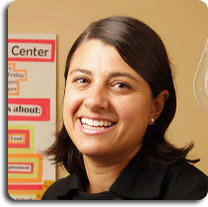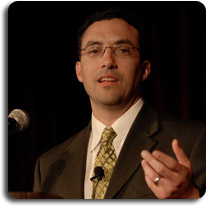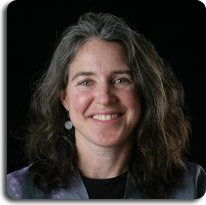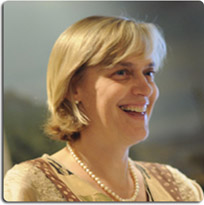 Rebecca Onie is the founder and CEO of Project Health, which recently changed its name to Health Leads. Health Leads is a TILE partner charity that operates Family Help Desks in medical clinics. These resource desks support healthy lives by connecting patients with key community and government resources. In 1996, during her sophomore year at Harvard College, Rebecca Onie founded Project HEALTH with Dr. Barry Zuckerman, Chair of Pediatrics at Boston Medical Center. A Harvard Law School graduate and a MacArthur “Genius Grant” Fellow, Rebecca leads the organization in realizing its vision of connecting low-income families to the resources they need to be healthy. Here she is:
Rebecca Onie is the founder and CEO of Project Health, which recently changed its name to Health Leads. Health Leads is a TILE partner charity that operates Family Help Desks in medical clinics. These resource desks support healthy lives by connecting patients with key community and government resources. In 1996, during her sophomore year at Harvard College, Rebecca Onie founded Project HEALTH with Dr. Barry Zuckerman, Chair of Pediatrics at Boston Medical Center. A Harvard Law School graduate and a MacArthur “Genius Grant” Fellow, Rebecca leads the organization in realizing its vision of connecting low-income families to the resources they need to be healthy. Here she is:
TILE: How do the issues you work on affect young people?
Rebecca: There is a link between poverty and poor health. To break that link, Project HEALTH recruits motivated college students that work with families to make sure they get the help they need. It is a transforming life experience for our student volunteers. It changes their way of thinking, it makes them view healthcare differently, and may influence their political views or choice of careers.
TILE: What was the catalyst for you to start Project HEALTH?
Rebecca: When I was a sophomore in college I spent six months in Boston City Hospital talking with doctors about what they would give their patients in a perfect world. The doctors realized that the absence of essential services such as jobs, food, heat, and housing was having a larger effect on their patients than the medicines they were prescribing. A doctor can prescribe an antibiotic but if a family is living in a car, they’re not going to be healthy.
TILE: What is the biggest challenge you face in your work?
Rebecca: The organization’s time and resources are limited so we have to make strategic choices as to how to deploy those resources. We have to decide which opportunities to seize. There is a very fine balance between pursuing exciting big-picture opportunities and also making the work we do on the ground better and better each day.
TILE: What’s the best advice you would give to your teenage self?
Rebecca: I wish I knew how much change a single person can bring about. I didn’t realize how powerful one person with a vision can be. The world needs leaders! If you have an idea about how to make the world a more just place, you should pursue it vigorously. Listen to more experienced people around you, but don’t take no for an answer.
TILE: How do you think young people can play a role in the changing landscape of philanthropy?
Rebecca: Young people are the future of philanthropy. When you’re starting to think about your role in philanthropy, ask yourself two questions: 1) What am I truly passionate about? And 2) How can I get involved? The best philanthropy isn’t just about giving money away. It’s about being really invested in the work that you’re supporting.
>> TILE brings you exclusive opinions, explanations, and interviews from experts in every industry. To read more, click on Ask the Experts in the TILE Library.
Have a burning question or an expert you’d like to see interviewed? Just Ask TILE!
 Jonah Edelman is the Chief Executive Officer of
Jonah Edelman is the Chief Executive Officer of  Gillian Caldwell is the former head of 1Sky, a TILE
Gillian Caldwell is the former head of 1Sky, a TILE  Beth Rhyne is a true microfinance expert. In her career, she’s overseen microenterprise development at
Beth Rhyne is a true microfinance expert. In her career, she’s overseen microenterprise development at